Gem & Jewellery
Sri Lanka's historical chronicle Mahavamsa speaks of gems and jewellery. Indeed, the Lord Buddha himself had to come to Sri Lanka to settle a dispute between two kings, Chulodara and Mahodara, over a Gem Studded Throne.
King Solomon is said to have bought gems from Sri Lanka to win the heart of his Queens. The great traveller, Marco Polo, was awestruck by a priceless ruby in the possession of the King of Sri Lanka. Sri Lanka was called Ratnadvipa as some of the rarest gems in the world are found in abundance under our feet and the hills above us. One of the world famous gemstones, Sri Lanka's Blue Sapphire that weighs 466 carats was discovered here. Other famous gems include the Blue Giant of the Orient, weighing nearly 500 carats and the Bluebell of Asia, which weighs 400 carats. The renowned Sri Lankan Star Sapphire is on permanent display at the Museum of Natural History in
New York, but due to an oversight, the stone has been called the star of India. Throughout the history Sri Lanka's gems and jewellery have adorned the crown jewels of many a royal families. A gem - a 105 carat cat's eye - discovered in a paddy field in Sri Lanka, gained fame among the royalty of Britain and was successively admired by Edward VII, George V, Edward VIII and Queen Elizabeth. Alexandrite, the rarest gem in the world is also found in Sri Lanka.
Sapphire
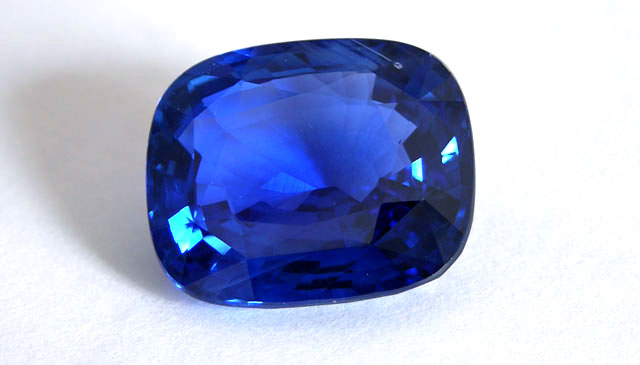
Blue colour variety of the corundum mineral species.
Composition: Aluminium oxide with traces of iron and titanium
Properties: Hardness: 9 Density: 4.0
Refractive Index: 1.776 - 1.770 Birefringence: 0.008
Colour: Blue, violetish blue in varying tones
Valuation: Most valuable and most favoured of coloured gemstones
There are many opinions about the origin of the word Sapphire. One is that it may have originated from Sanskrit, meaning precious to the Saturn Sanipriya (Sani = Saturn, Priya = Precious). Buddhist monks who moved to the Middle East introduced the stone as Sanipiriya and eventually become sapir and sapphire.
Blue sapphire is associated with the Saturn and the birthstone for September. The 45th wedding anniversary is known as the sapphire anniversary.
Blue sapphires from Sri Lanka have a unique beauty all their own,... Rakwana stones are of particular value with their colour compared to that found on the tip of a peacock feather or that on a peacock neck.
Sri Lanka is the world's most prolific producer of giant sapphires (of more than 100 carats).
Ruby

Red colour variety of the corundum mineral species.
Composition: Aluminium oxide with traces of chromium
Properties: Hardness- 9; Density: 4.0;
Refractive Index: 1.776 - 1.770; Birefringence: 0.008
Colour: Red with a trace of violet. Also called pigeon blood red. Red fluorescence intensifies the body colour.
Valuation: Most valuable of all coloured gemstones
The name ruby was derived from the Latin word rubens, meaning 'red'. Ruby red colour represents love, passion and power.
Ruby is the birthstone for July and is associated with the Zodiac signs Leo and Cancer. Ruby is associated with the Sun in Vedic astrology. It is the gemstone for 40th wedding anniversary.
Ruby is the king of coloured gemstones and also the magnificent red variety of the multi-coloured corundum species, with bright red body colour and fluorescence, supreme hardness and toughness, outstanding brilliance and lustre and the highest value of all coloured gemstones for the rarity. Bright red colour of 'Burmese ruby' from Mogok valley in Myanmar is the most demanded. Rubies from Sri Lanka are of higher brilliance with a trace of violet.
Top grade Sri Lankan reds (rubies) are virtually indistinguishable from their Mogok brethren.
Padparadsha
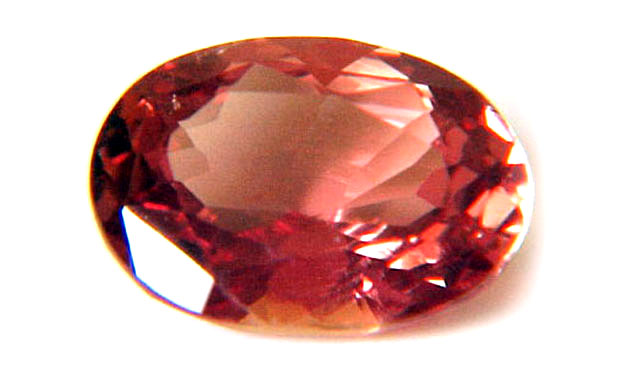
Pink and yellow mixed variety of the corundum mineral species
Composition: Aluminium oxide with traces of chromium and yellow colour centres
Properties: Hardness: 9 Density: 4.0
Refractive Index: 1.776 - 1.770 Birefringence: 0.008
Colour: Pink with a mixture of yellow/ orange compared to colour of the Lotus Flower. Fluorescence of red and orange.
Valuation: It is one of the most beautiful and valuable gemstones, and the prices vary greatly according to size and quality.
The term Padparadsha is derived from the Sanskrit / Sinhalese Padma Raga, the colors seen in the lotus flower with pink petals Blue colour of peacock neck The colors seen in the lotus flower with pink petals and yellow colour pollen. A view of a gem mining area in Sri Lanka 112 | Lustrous Gems & Gem Mining in Sri Lanka and yellow colour pollen. It is a special variety of the corundum species in an extraordinary mixture of pink and orange colours. Some define the gem's color as a blend of lotus flower and sunset.
The original locality for Padparadscha was Sri Lanka (Ceylon). Fine stones have also been found in Vietnam's Quy Chau district, Tanzania's Tunduru district, and Madagascar.
Alexandrite
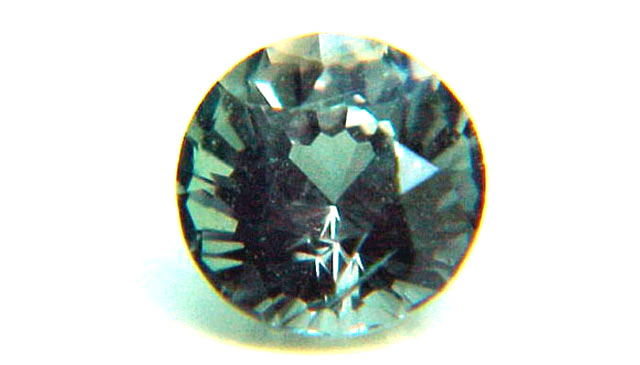
A colour changing variety of the Chrysoberyl mineral species.
Composition: Beryllium aluminium oxide with traces of chromium
Properties: Hardness: 8.5 Density: 3.71
Refractive Index: 1.745- 1.754 Birefringence: 0.009
Colour: Green body colour for day light changing to red colour under tungsten light
Colour: Green body colour for day light changing to red colour under tungsten light
This gem was named in honour of the future Tsar Alexander II. of Russia during whose reign the Russian imperial colours were also red and green.
Sri Lanka is one of the suppliers of Alexandrite and Alexandrite Cat's Eye varieties
Alexandrite is reputed to aid creativity and inspire the imagination. It is also considered a stone of very good omen. In critical situations, when logic is not the answer, the wearer of this gem will be helped to overcome by strengthening his intuition. Alexandrite is the gemstone for 55thanniversary.
"If you love magic, especially the magic of science, you'll love alexandrite, the color-change gem. Outside daylight, it is cool bluish mossy green. Inside lamplight, it is red with a warm raspberry tone. You can watch it flicking back and forth by switching from fluorescent to incandescent light."
CHRY SOBERYL Cat's Eye
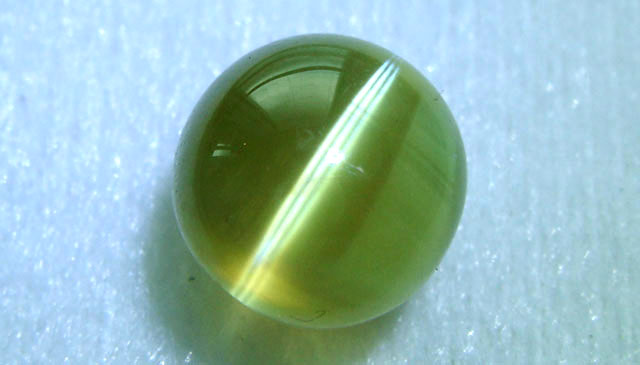
Cat's Eye variety of the chrysoberyl species.
Composition: Beryllium aluminium oxide and silky inclusion
Properties: Hardness: 8 Density: 3.71
Refractive Index: 1.745 - 1.754 Birefringence: 0.009
Colour: Brown, green, yellow and their mixed hues. Special optical effect: Chatoyancy, the cat's eye effect due to oriented fine silky inclusions.
Valuation: One of the most valuable gemstones, and the prices vary greatly according to size and quality.
Cat's Eye and Alexandrite Cat's Eye varieties of the Chrysoberyl species are found in Sri Lanka gem gravels, some of which are of the highest quality and in large sizes. 'Ray of Treasure' Cat's Eye of 105 carats is part of the gemstone collection of the National Gem & Jewellery Authority.
Cat's Eye is the variety of Chrysoberyl species which is believed to posses some special qualities. It has been regarded as an effective protective stone and talisman gemstone to keep disasters away. Chrysoberyl with its golden tones is often associated with wealth, a reason for the Cat's Eye being a gemstone of the luxury class.
This gemstone helps maintain discipline and self-control, promotes concentration and the ability to learn, and enables the wearer to think clearly and far-sightedly. It also transforms the negative thoughts of the wearer into positive energy, and promotes tolerance and harmony. It is one of the lucky stones for those born under the sign of Leo. Cat's Eye is the gemstone for 18th anniversary.
Star Sapphire
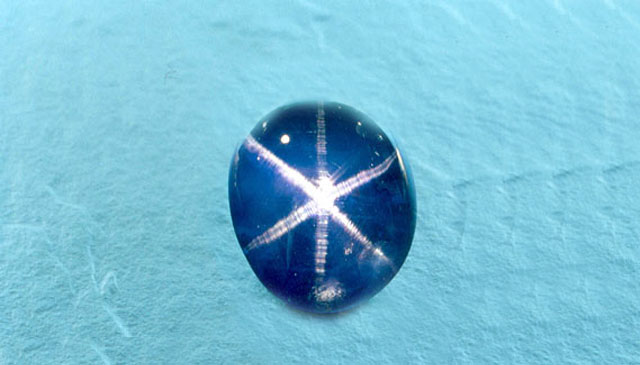
Blue colour star variety of the corundum mineral species.
Composition: Aluminium oxide with traces of iron and titanium for colour and oriented fine rutile needles in three directions.
Properties: Hardness: 9 Density: 4.0
Refractive Index: 1.776 - 1.770 Birefringence: 0.008
Colour: Blue, violetish blue in varying tones
Valuation: Star effect with bright silky rays in three directions
Some of the giant Star Sapphires from Sri Lanka are: "Star of Artaban" (316 carats) and the "Bismark Sapphire" (98.6 carats), both are in the Smithsonian Collection, "Star of India " and "Midnight Star" (116.75 carats), both in American Museum of National History in New York and also the finest 393 carat "Star of Sri Lanka" is in the possession of the National Gem & Jewellery Authority.
"Over the years Sri Lanka has produced some large natural blue sapphires, both faceted and stars. These include top quality gems in the 100 - 300 ct range. Many of the largest sapphires in museum collections around the world have originated from the gem gravels of Sri Lanka."
Star Ruby
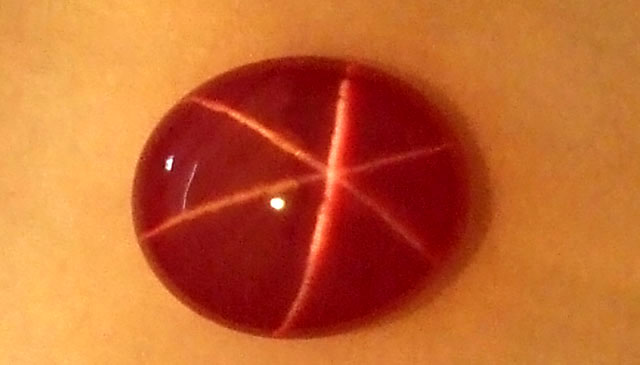
Red coloured star variety of the corundum mineral species
Composition: Aluminium oxide with traces of chromium for colour and oriented fine rutile needles in three directions.
Properties: Hardness: 9 Density: 4.01
Refractive Index: 1.776 - 1.770 Birefringence: 0.008
Colour: Red, violetish red in varying tones
Special Optical Effects: Star Effect with bright silky rays in three directions
Valuation: One of the valuable gemstones
This phenomenon of asterism, producing star effect is caused by very fine needles of rutile oriented in three directions. When perfectly cut, the six-spoked star will be seen to glide magically across the surface of the stone when the latter is moved. The value depends on the beauty and the attractiveness of the hot red colour and transparency, in addition to the well centred strong and sharp rays of the star.
Sri Lanka Star Rubies are light red, like ripe raspberries, but, with very bright rays of the star.
Moonstone
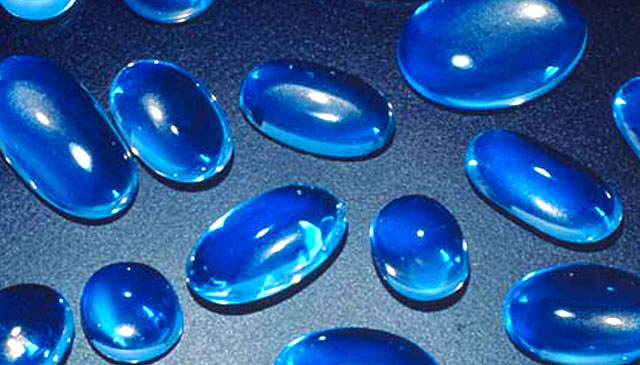
A variety of the feldspar group - Potassium aluminium silicate with special optical effect of schiller called Adularescence
Properties: Hardness: 6 - 6.5 Density: 2.56
Refractive Index: 1.520 - 1.539 Birefringence: 0.008
Colour: Moonstones come in a variety of colors. The body color can range from colorless to white, gray, brown, yellow, green, or pink. Its beauty is produced by white or blue schiller effect.
Identification of moonstone is the display of shimmer, caused by the intergrowth of two different varieties of feldspar, with different refractive values. Its characteristic inclusion is called 'centepede' or 'Chinese aeroplane' which is due to the fine cleavage fractures in to two directions.
"The ancient Romans theorized that moonstone, with its unearthly shimmer, was formed from frozen moonlight. This appealing gem variety does shine with a cool lunar light but it is the mineral feldspar, quite terrestrial in origin."
Moonstones from Sri Lanka, the classical country of origin of the moonstone, shimmer in pale blue is on an almost transparent background. The best variety with blue sheen is mined in southern Sri Lanka in an area near Ambalangoda, which had formed in a rock type called pegmatite.
Topaz

Composition: Fluorine containing aluminium silicate
Properties: Hardness: 8 Density: 3.53
Refractive Index: 1.610 - 1.630 Birefringence: 0.010
Colour: Colourless, pink, blue, yellow, orange, brown
Topaz sometimes has the amber gold of fine cognac or the blush of a peach, and all the beautiful warm browns and oranges in between. Some rare and exceptional examples are pale pink to a sherry red.
Blue, once the most rare color of topaz, is today the most common, due to a stable enhancement process that turns colorless topaz to blue. After irradiation it turns to brown and then heated to sky blue. This enhancement process is permanent. Topaz from Sri Lanka had become most popular for this treatment.
"The Egyptians said that topaz was colored with the golden glow of the sun god. Legend has it that topaz dispels all enchantment and helps to improve eyesight. The ancient Greeks believed that it had the power to increase strength and make its wearer invisible in times of emergency." AGTA
The birthstone for November, topaz is a talisman for the sign of Sagittarius and is the suggested gift for the 23rd anniversary.
Rhodolite Garnet
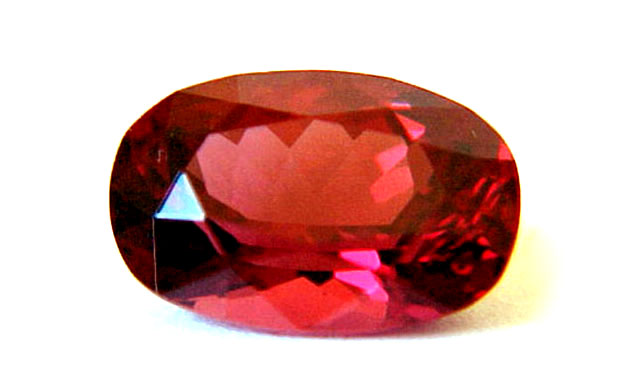
Pyrope and Almandine Mixture Garnet is the group of six gem quality species in an intermixing compositions, representing more than ten varieties in different colours, but with exception for blue colour. Red is the most often encountered colour, which appears in varying hues and tones, produced from the combination of almandine-pyrope species.
Composition: Magnesium-iron aluminium silicate
Properties: Hardness: 7 - 7 Density: 3.7- 4.2
Refractive Index: 1.74 - 1.79 singly refractive
Colour: Red, purplish red, pale to deep mauve
The name garnet is derived from Latin granum (seed) meaning grainy, which has its origin in Sanskrit. This makes the reference to typical roundest shape of garnet crystals in rhombdoceahedral or trapezohedral habit and also to the pink to red colour, reminding the similarity in appearance to seed of a ripe pomegranate.
Garnets were known to man for thousands of years. They are found in jewellery from the early Egyptian, Greek and Roman times. Early explorers liked to carry garnets with them in consideration as a talisman and protective stone, by believing it to light up the night and protect the bearer from evil and disaster. It was also the belief that these gems would bestow upon their wearer a variety of love sentiments, including commitment and devotion. Fiery red pyrope garnets were popular in the Victorian period as Bohemian garnets which were coming from Bohemia (in Europe). Rhodolite is the pyrope and almandine mixed variety with varying tones of violetish red colour coming from most of gem mining areas in Sri Lanka.
Garnet is the gemstone for 2nd anniversary and the birthstone for the month of January.
Spinel

Composition: Magnesium aluminium oxide
Properties: Hardness: 8 Density: 3.60
Refractive Index: 1.72 single refractive
Spinel exhibits in a wide range of colours from near colourless, through shades of orange, and pink to red, pale blue through deep blue to dark blue, bluish green and black.
Spinel is the end member of a group of species with proportional intermixing (isomorphism), with its other family members of ceylonite, pleonaste and hercinite with ferrous iron, gahnospinel and gahnite with zinc, chromite with chromium, chlorospinel with ferric iron and rare cobalt spinel with cobalt.
Spinel is known as the greatest imposter in gemstone history, by occupying in many crown jewels as famous rubies. The famous Black Prince's ruby in the Imperial State Crown of England of the British Crown Jewels is a 170 carat red spinel. The Timor Ruby now owned by Queen Elizabeth and with the names of some of the Mogul emperors who previously owned it being Tourist Directory 2015 Lustrous Gems & Gem Mining in Sri Lanka | 115 engraved on its face is a 361 carat red spinel.
Even today strong red spinels from Burma and bright blue spinels from Sri Lanka impose confusion for ruby and sapphire. On the other hand, two blue rarities - cobalt spinel and gahnospinel, both found in Sri Lanka bring delight to collectors. Taaffeite with a similar appearance in colour but belongs to a different species is a rare gemstones found in gem gravels in Sri Lanka along with spinels.
Spinel is the gemstone for the 22nd anniversary.
Zircon
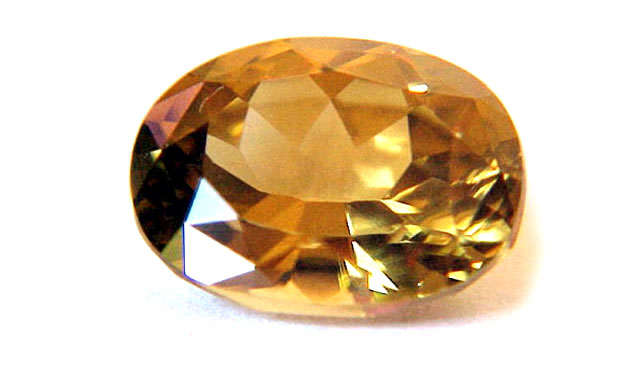
Composition: Zirconium silicate
Properties: Hardness: 7 - 6 Density: 4.8 to 3.9
Refractive Index: 1.92 - 1.99 to 1.76 - 1.84
Birefringence: 0.059 to almost none in metamict stones
Color: Colourless, pink, blue, yellow, orange, brown
Name probably comes from Persian word 'zargun' meaning "gold coloured" though it is found in a other colours.
Zircon comes in a wide range of colours and for many years,the most popular was the colourless variety which looks similar to diamonds than any other natural gemstone, due to its high brilliance, refraction and dispersion. This material was known as Matara diamond for originating in the Rakwana Hills in the Southern part of Sri Lanka and its destination in Europe.
It was the tradition to produce blue, yellow and colourless varieties by heat treatment, which is accepted by the trade. Zircons are also found in other colours of green, red, brown and orange.
In the Middle Ages, it was in the belief that zircon was said to help sleep, bring prosperity and promote honour and wisdom to its owner. Hindu poets mention of Kalpa Tree (Kalpa Wruksha) the ultimate gift of the gods, a glowing tree covered in gemstone fruits with zircon of leaves.
Gem mining

The process of mining for gems begins at an auspicious time followed by a brief religious ceremony. The most common methods of mining are in pits and by tunnelling. Surface gemming and dredging depend on the location and the type of deposits. Stones are normally found in a layer of crude, pebbly material, which contains traces of clay and fine sand. This gravel containing gems is referred to as "illam" and is found just below the alluvial deposits.
Gem pits are of two kinds. The shallow ones are well-shaped and circular, whereas deep pits are rectangular. To prevent the walls of the pits from caving-in scaffoldings are made and the spaces filled with leaves. The water is then pumped out of the pit. If the "illam" vein runs horizontally, tunnelling has to be done so. There is another method of collecting illam is to place on a wooden poles across the river bed and standing on a pole with a long stick, a person drags the gravel towards him, then collects it in buckets.
Lastly, the gravel is washed in large circular rattan buckets by immersing them in water and rotating them. This enables the light, ordinary pebbles and sediment to escape, leaving the heavier pebbles behind. Then the baskets are held against the sunlight and the sorting is carried out. Each illam brings forth a variety of stones.
The principal source of Alexandrite, the rarest gem in the world is Sri Lanka. It was first found in the Urals in 1830 and is named after Czar Alexander II. This stone shines green in natural light but turns raspberry red in artificial light.
The cat's eye is another stone which is considered valuable and rare. It derives its name from the fact that a silvery line runs across its greenish-gray surface, giving it a remarkable resemblance to the eye of a cat. The rarest type is the black cat's eye.
Sri Lanka can boast of having 70 varieties of precious and semiprecious stones.






